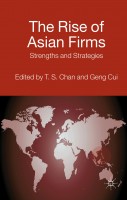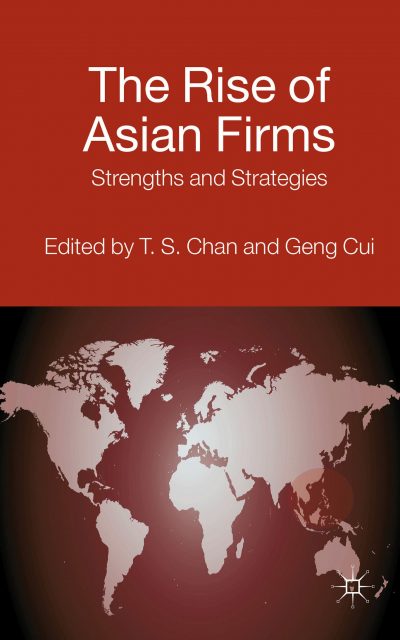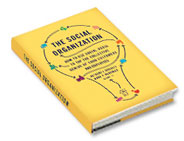 Editors: T.S. Chan and Geng Cui
Editors: T.S. Chan and Geng Cui
Publisher: Palgrave Macmillan – 227 pages
Book Review by: Sonu Chandiram
In the three decades between 1982 and 2012, the average person in China increased his or her income from a measly $279 a year to $6,767 a year, a phenomenal multiple of almost 25 times.
But the country’s gross domestic product per capita grew much higher in 2013: $11,868, (89th in the world) according to the International Monetary Fund. The reason? China. known as “the world’s factory,” exported hundreds of billions of dollars of products to overseas markets, particularly to North America and Europe, bringing in lots of money.
India’s per-capita income was much lower at $5,450 in 2013, and ranking a low 126th among 187 nations. But this is fast rising, as Indian companies increase the people’s incomes and wealth by boosting exports and seizing opportunities abroad through acquisitions. With competitive labor rates for manufacturing and services in India, and an advantageous currency exchange rate, they are able to multiply their invested capital, selling in dollars and Euros.
In the 12 years between 2000 and 2012, Indian firms acquired 1,995 international companies, Bloomberg News reported. The total value of these firms was about $116 billion. That comes to an average $58 million value per company.
The acquiring firms, to name some of the major ones, were: Aventis Pharma, Bharat Forge, Hindalco, Infosys, Mahindra and Mahindra, Reliance, Sundaram Fasteners, Suzlon, and Tata.
Another country’s successful overseas ventures discussed in this book are those of the tiny city-state of Singapore, whose per-capita income, per IMF numbers, was the third highest in the world in 2013, at $78,762 (after Qatar at $145,894, Luxembourg at $90,333). Comparatively, the United States was ranked tenth, with $53,001, just above Hong Kong in eleventh place at $52,984.
Taiwan is another country covered in this book in terms of its nimble and smaller companies competing for commerce in Asia and the world. In 2013 its GDP per capita was a high $41,539, ranked 22nd in the world.
This book discusses the experiences, strategies, successes and failures of companies located in the countries mentioned above. Six of its ten chapters deal with China, two with India, and one each for Singapore and Taiwan. He is an overview of what you will find in it”
- Asian Firms: Environment, Institutions, and Management
- Research on Asian Firms: A Review and Look Forward
- The Impact of Network Relationships, Environment and Localization on the Performance of Taiwanese Small and Medium Enterprises
- The Internationalization of Emerging Market Multinationals: Effects of Host and Home Country Institutional Factors
- Imprinting Home Institutional Influence: Chinese Firms’ Long-Term Performance in Cross-Border Mergers and Acquisitions
- Rise of the Indian Firm: Understanding Leadership and Indian Organizations
- Internationalization of Asian Firms: Perspectives and Strategies
- Adapting to Change; The State of Singaporean Private Enterprise in China
- Perspectives on Chinese Foreign Direct Investment in Australia
- Acquisition versus Greenfield: The Strategy of Chinese Private Investors in Developing Countries
- Different Roads to Rome? Patterns of Internationalization in Chinese Firms
- An Exposition of Indian Overseas Investment in Germany: Trends, Motivations, and Challenges
This is an excellent book on Asian firms.
Editors:
T.S. Chan is Shun Hing Chair Professor of Marketing at Lingnan University in Hong Kong. He received his DBA from Indiana University – Bloomington, and BBA and MBA degrees from the University of Wisconsin at Madison. As an active researcher he has published or edited 10 books and over 100 articles and papers in the area of international marketing strategies, cross-cultural consumer behavior, joint venture decisions and marketing education.
He serves on the editorial board of five international journals. He consults widely for corporations and government agencies in Hong Kong and abroad. His areas of consulting include strategic marketing planning, effective selling, leadership, and intercultural communication.
Geng Cui is Professor in the Department of Marketing and International Business at Lingnan University in Hong Kong. His research interests include consumer behavior and marketing in China, foreign direct investment strategies and performance, and quantitative models in marketing.
His works have appeared in leading academic journals. He is a leading scholar on Chinese consumer research, which has been widely cited and adopted for marketing practice and teaching. He has been a consultant to local and overseas organizations on China business and marketing strategies.
Contributors:
Ya-Yuan Chang, Xudong Chen, Ritam Garg, Wilfred How, Robert Graham Jack, Wiboon Kittilaksanawong, Sai Lan, Ku-Ho Lin, Denny Meyer, Chueh-Chu Ou, Ling Peng, Lijun (Karl) Qin, Christopher Selvarajah, Suku Sukunesan, Wei-Kuo Tseng, R. Venkatapathy, Shanshan Xie, Fan Yang, Caroline Yeoh, Hua Zhang, Yuanyuan Zhang, and Hong (Susan) Zhu.







